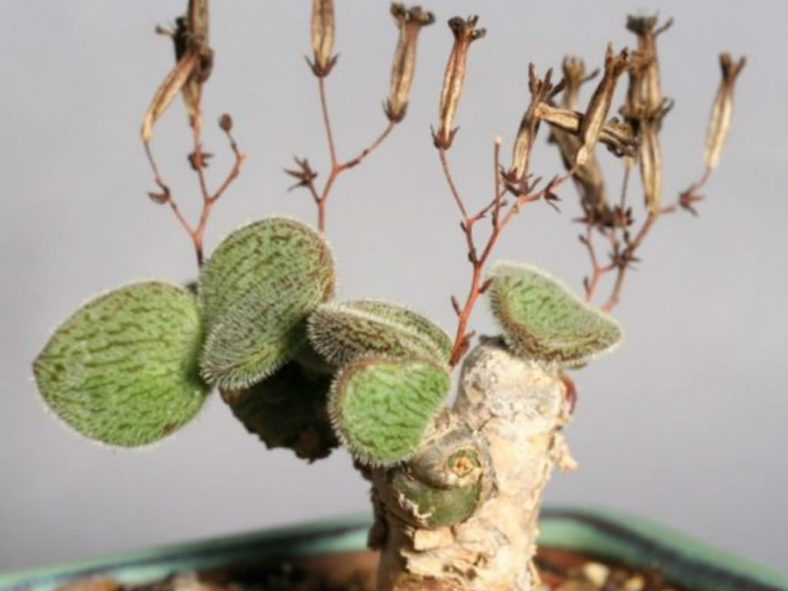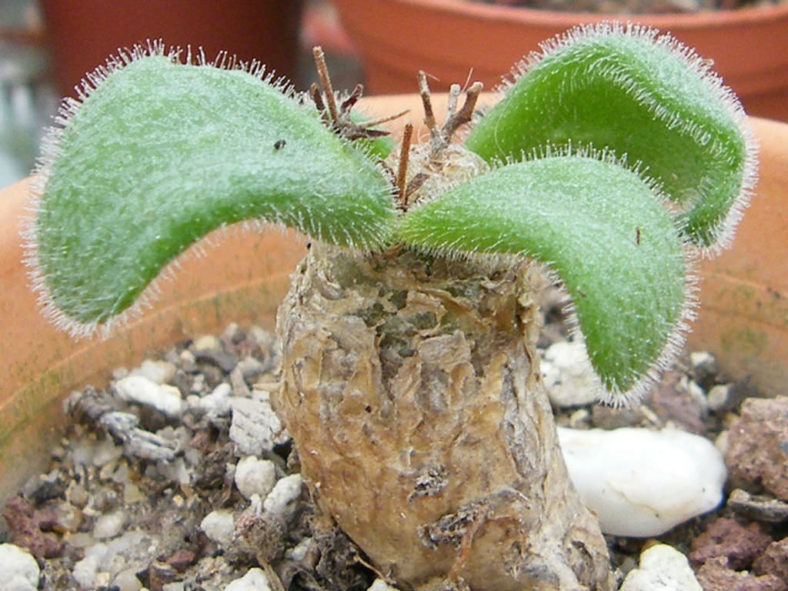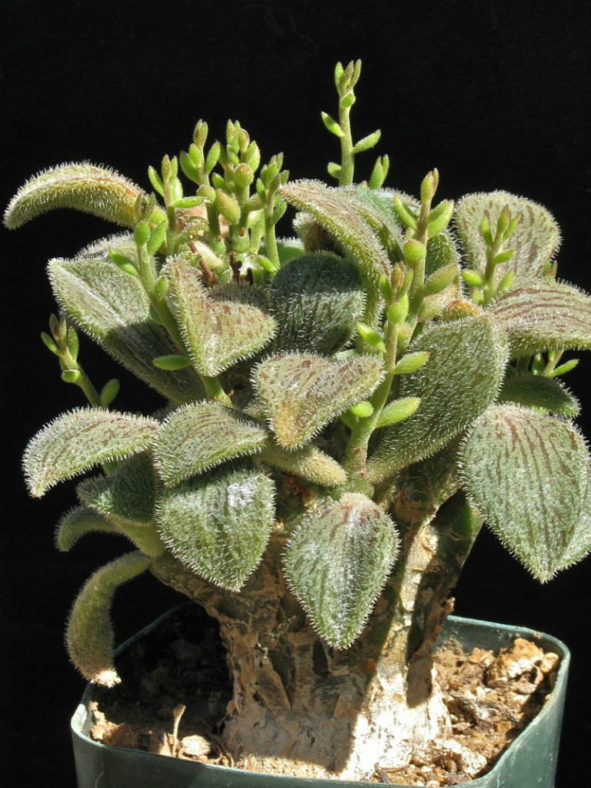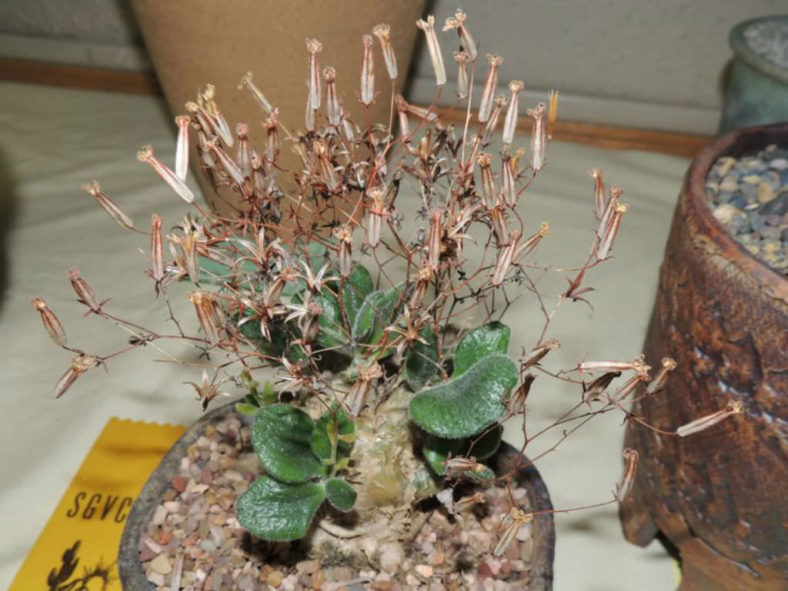Scientific Name
Tylecodon nolteei Lavranos
Scientific Classification
Family: Crassulaceae
Subfamily: Kalanchoideae
Genus: Tylecodon
Etymology
The specific epithet "nolteei" (pronounced NOL-tee-eye) honors Frans K. A. Noltee, a Dutch succulent plant enthusiast, horticulturist, and photographer.
Origin
Tylecodon nolteei is native to South Africa (Northern Cape).
Description
Tylecodon nolteei is a dwarf, sparingly branched succulent shrub with a thick main stem reaching up to 0.8 inches (2 cm) in diameter. In its native habitat, it can grow up to 2.8 inches (7 cm) tall but is often taller in cultivation. The main stem and branches are olive-green to brownish with smooth, slightly peeling bark. The leaves are hairy, rounded to broadly elliptic, measuring up to 1 inch (2.5 cm) long and 0.9 inches (2.2 cm) wide. They are greyish-green with dark green to reddish translucent spots on the leaf blade.
The flowers are erect, cream to pale pink, and appear on branched stalks that can grow up to 1.6 inches (4 cm) tall in summer. They can reach a length of 0.5 inches (1.3 cm).

How to Grow and Care for Tylecodon nolteei
Soil: A well-draining soil mix is the key to healthy Tylecodon. Poor drainage and overwatering most commonly cause root rot in both indoor and outdoor plants.
Light: Tylecodons can survive direct sunlight exposure without problems, but they will grow beautifully in shadow.
Hardiness: Tylecodon nolteei can withstand temperatures as low as 25 to 50 °F (-3.9 to 10 °C), USDA hardiness zones 9b to 11b.
Watering: As winter is the growing season, Tylecodons require careful watering from winter until the spring. Get the soil wet, and then wait until it is dry before watering again. In the summer, reduce watering to once per month.
Fertilizing: Use liquid fertilizer for cacti and other succulents in winter.
Repotting: You do not need to repot these plants often. You can do it when the container becomes too small or shallow.
Propagation: Tylecodons can be cultivated either by seed or by cuttings.
Learn more at How to Grow and Care for Tylecodon.
Toxicity of Tylecodon nolteei
Tylecodon species are adapted to avoid animal predation being poisonous. Therefore, keep them away from children, pets, and livestock.
Links
- Back to genus Tylecodon
- Succupedia: Browse succulents by Scientific Name, Common Name, Genus, Family, USDA Hardiness Zone, Origin, or cacti by Genus
Photo Gallery
Click on a photo to see a larger version.


